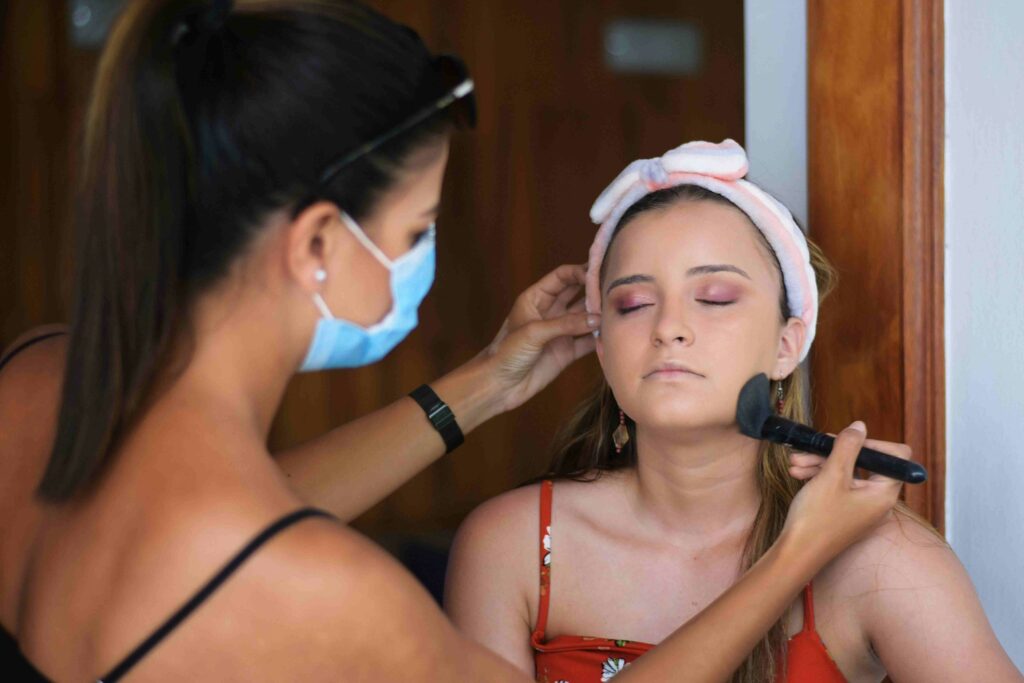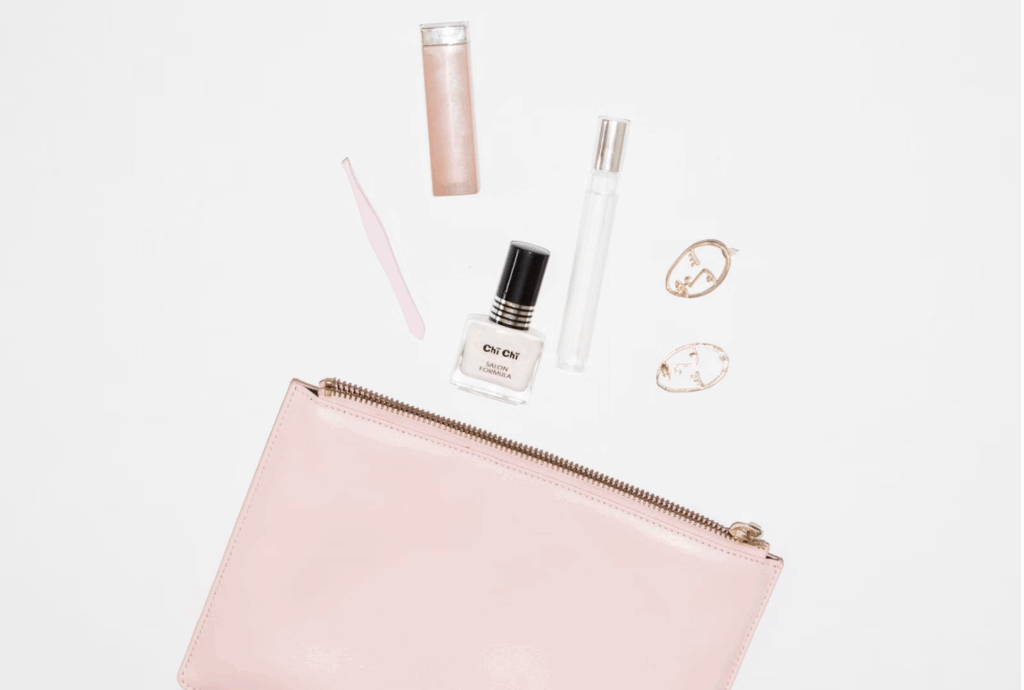Prepararsi la mattina può sembrare una routine, ma per molti, è un momento di calma prima che la giornata abbia inizio. Il trucco gioca spesso un ruolo chiave in questo. Correttore, particolarmente, può aiutarti a sembrare riposato e sveglio, ma gli strumenti che usi contano. Potresti chiedertelo, è meglio un pennello o una spugnetta per il correttore? La scelta può davvero avere un impatto sulla fluidità del trucco e sulla sua durata. Esploriamo quale opzione è la migliore per te.

Quale pennello viene utilizzato per il correttore?

UN pennello per correttore in genere presenta un piccolo, Piatto, design con setole sintetiche, ideale per lavori di precisione. I pennelli affusolati per correttore consentono un'applicazione più mirata, particolarmente utile per le imperfezioni e la zona sotto gli occhi. Le setole sintetiche sono fondamentali, poiché non assorbono il prodotto liquido come fanno le fibre naturali, assicurando che più prodotto raggiunga la pelle. Denso, le setole rigide aiutano a lucidare il correttore, lasciando un pareggio, effetto aerografato.
Quale forma di spugna viene utilizzata per il correttore?

Trucco spugne sono disponibili in varie forme, ma la goccia e la zeppa sono le più efficaci per l'applicazione del correttore. La punta appuntita di una spugna a goccia eccelle nel raggiungere zone delicate come gli angoli interni degli occhi, mentre la base più ampia può fondere perfettamente aree più grandi. Le spugne a forma di cuneo sono ideali anche per i lavori di dettaglio, soprattutto nelle aree in cui la precisione è fondamentale, poiché i bordi angolati offrono un controllo preciso.
È meglio un pennello o una spugna per il correttore??
Gli strumenti giusti possono fare la differenza quando si applica il trucco, soprattutto quando si tratta di correttore. Che tu voglia coprire le occhiaie o nascondere le imperfezioni, il modo in cui applichi il correttore può influenzare l'aspetto finale. Alcuni prendono un pennello, mentre altri giurano per una spugna, ma quale offre i migliori risultati? Immergiamoci nei vantaggi di ciascuno per scoprirlo.
Tipo di correttore
La scelta tra pennello o spugnetta dipende spesso dalla formula del correttore. Per più spesso, prodotti a base di panna, è preferibile un pennello in quanto fornisce controllo e precisione. Correttori liquidi, d'altra parte, trarre vantaggio dalla capacità della spugna di diffondere e sfumare il prodotto in modo fluido, evitando aloni che potrebbero provenire da una spazzola.
Fine
Per un effetto più naturale, finitura diffusa, le spugne tendono ad essere superiori. La loro capacità di premere il prodotto sulla pelle crea un effetto senza soluzione di continuità. Spazzole, Tuttavia, sono migliori per una copertura completa, poiché possono depositare più prodotto in un'area concentrata. Quelli che mirano a qualcosa di più pesante, l'aspetto impeccabile può propendere per i pennelli, mentre le spugne funzionano meglio per un velato, effetto seconda pelle.
Aree difficili da raggiungere
Spugne, in particolare quelli con punte appuntite, sono ottimi per le zone difficili da raggiungere come gli angoli interni degli occhi o intorno al naso. Spazzole, anche se per certi versi più preciso, potrebbe avere difficoltà con queste piccole fessure. Tuttavia, uno più piccolo, il pennello angolato può comunque funzionare bene in punti dettagliati se usato con cura.
Rifiuti del prodotto
Quando si considerano gli sprechi di prodotto, i pennelli sono il chiaro vincitore. Le spugne tendono ad assorbire una parte del prodotto, soprattutto se non inumidito prima dell'uso. Spazzole, soprattutto quelli sintetici, non assorbire formule liquide, consentendo un uso più efficiente del correttore. Questo è un fattore chiave per coloro che lavorano con quantità di prodotto di fascia alta o limitate.
Pulizia
Le spugne richiedono una pulizia più frequente e approfondita a causa della loro natura porosa, che possono ospitare batteri e accumuli di vecchi prodotti. Le spazzole sono più facili da pulire, spesso richiedono meno tempo e manutenzione. La pulizia regolare di entrambi gli strumenti è essenziale per evitare sfoghi o irritazioni della pelle.
Suggerimenti aggiuntivi per l'applicazione del correttore
- Spingere il prodotto nella pelle: Evita di trascinare il correttore sul viso. Spingendolo o picchiettandolo sulla pelle aiuta il prodotto a fondersi con la tua carnagione, garantendo una finitura più duratura. Questa tecnica funziona bene sia con i pennelli che con le spugne per un'applicazione più fluida.
- Inumidisci la spugna: Prima di applicare il correttore, inumidisci leggermente la spugna. Una spugna bagnata impedisce l'assorbimento del prodotto e consente una stesura più uniforme, pura applicazione. Aiuta anche a fondere perfettamente il prodotto con la pelle per una finitura naturale.
- Usa il dito per la miscelazione finale: Per un effetto più naturale, finitura simile alla pelle, picchiettando i bordi del correttore con il dito puoi ammorbidire eventuali linee dure. Il calore della pelle aiuta a sciogliere il prodotto, facendolo fondere in modo più naturale con l'area circostante.
- Applicare strati sottili: Invece di applicare uno spesso strato di correttore tutto in una volta, costruire una copertura in strati leggeri. Questo metodo previene la formazione di appiccicosità e garantisce che il prodotto aderisca comodamente alla pelle. Permette una maggiore uniformità, copertura modulabile senza appesantire.
- Fissare immediatamente con la polvere: Dopo aver applicato il correttore, spolverare una polvere traslucida sull'area per bloccarla in posizione. Questa tecnica previene la formazione di pieghe e garantisce che il correttore duri tutto il giorno, soprattutto nelle aree soggette a movimento, come sotto gli occhi.
- Rubinetto, non scorrere: Quando si utilizza un pennello o una spugna, picchiettando il prodotto invece di passarlo si crea una distribuzione più uniforme del correttore. Lo scorrimento può spostare troppo il prodotto, portando a chiazze o striature.
- Usa una tonalità schiarente: Per il correttore sotto gli occhi, optare per una tonalità leggermente più chiara del fondotinta per illuminare la zona. Questo aiuta a contrastare le occhiaie e aggiunge un leggero lifting al viso senza la necessità di una copertura pesante.
- Inizia in piccolo, quindi costruire: Applicare prima una quantità minima di correttore, soprattutto con un prodotto a copertura totale. È più facile aggiungere più prodotto se necessario piuttosto che rimuovere l'eccesso una volta applicato. Ciò garantisce una finitura naturale e controllata.
- Lavora rapidamente con i correttori liquidi: I correttori liquidi tendono ad asciugarsi più velocemente, quindi lavora in sezioni per evitare l'impostazione del prodotto prima di aver avuto la possibilità di sfumare. Ciò è particolarmente importante con le formule opache, che possono diventare difficili da spostare una volta fissati.
- Evitare di applicare il correttore direttamente sulle zone asciutte: Se hai zone secche o squamose, evitare di applicare il correttore direttamente su di essi. Invece, idratare prima la pelle con una ricca crema idratante o un primer, quindi applicare il correttore con parsimonia per evitare di enfatizzare la texture.
Conclusione
Sia i pennelli che le spugne hanno i loro pregi quando si applica il correttore. I pennelli offrono precisione e copertura più completa, mentre le spugne creano un effetto naturale, finitura senza soluzione di continuità. In definitiva, dipende dal tipo di correttore e dall'aspetto desiderato. COSÌ, è meglio un pennello o una spugnetta per il correttore? La risposta varia, ma con la scelta e la tecnica giusta, un'applicazione impeccabile è a portata di mano. Pronto per perfezionare il tuo gioco di correttori? Inizia a sperimentare entrambi gli strumenti per vedere quale si adatta meglio a te!


















